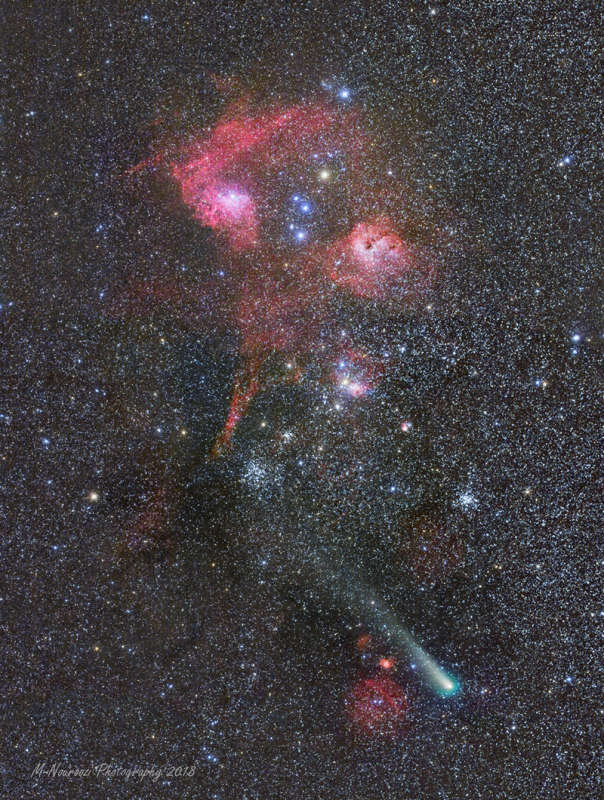Credit & Copyright: Mohammad Nouroozi
Explanation:
Bright enough for binocular viewing
Comet 21P /
Giacobini-Zinner stands out, even in this
deep telephoto
mosaic of the star cluster
and nebula rich constellation Auriga
the Charioteer.
On the night of September 9 its greenish coma and diffuse tail contrast
with the colorful stars and reddish emission nebulae in the
almost 10 degree field of view along the Milky Way.
The comet was near its perihelion and closest approach to Earth,
about 200 light-seconds away.
Riding across the distant background just above the comet's tail
are well-known Auriga star clusters M38 (left of center) and
M36 (toward the right) about 4,000 light-years away.
At the top left, emission region IC 405 is only 1,500 light-years
distant, more dramatically known as the
Flaming Star Nebula.
To its right lies IC 410, 12,000 light-years away and
famous for its star-forming
cosmic tadpoles.
A child of
our
Solar System Giacobini-Zinner is a periodic
comet orbiting the Sun once every 6.5 years, and
the parent body of October's
Draconids meteor shower.
1999 2000 2001 2002 2003 2004 2005 2006 2007 2008 2009 2010 2011 2012 2013 2014 2015 2016 2017 2018 2019 2020 2021 2022 2023 2024 2025 |
Yanvar' Fevral' Mart Aprel' Mai Iyun' Iyul' Avgust Sentyabr' Oktyabr' Noyabr' Dekabr' |
NASA Web Site Statements, Warnings, and Disclaimers
NASA Official: Jay Norris. Specific rights apply.
A service of: LHEA at NASA / GSFC
& Michigan Tech. U.
|
Publikacii s klyuchevymi slovami:
comet - nebula - star cluster - komety - tumannost' - Skoplenie
Publikacii so slovami: comet - nebula - star cluster - komety - tumannost' - Skoplenie | |
Sm. takzhe:
Vse publikacii na tu zhe temu >> | |
